#angel 1999
Explore tagged Tumblr posts
Text

#tv series#tv shows#polls#angel 1999#david boreanaz#charisma carpenter#j august richards#1990s series#us american series#have you seen this series poll
106 notes
·
View notes
Text

It turns out, Angel is a good cook, for someone on a liquid diet.
(I did love the jokes in this series.)
Angel 1x10, Parting gifts
14 notes
·
View notes
Text
never have I understood Angel from Buffy more than when in his own show he suggest going out and Cordelia said she would go home and Doyle said "you can sit in the dark alone" and Angel replied "God. yes. thank you"
Bby just wanted to stay at home and be done with people and I completely understand
20 notes
·
View notes
Text
only the option with the LEAST votes will be eliminated. propaganda under the cut (and more always welcome!):
jean-luc picard and beverly crusher:
They have a number of romantic moments throughout the TNG series from arguably the first but DEFINITELY the second episode. but they only get together (briefly before divorcing) in an alternate timeline episode which is also the season finale. Also they have a kid together in Picard but are still not allowed to be together She was married to his best friend and he was in love with her but wouldn’t say anything because he wouldn’t want to damage his bestie’s marriage and then his friend died and they met again years later and shared a lot of romantic and sexual tension for years. He openly admitted (under mind reading) that he had loved her since his bestie was alive but felt he couldn’t act on it. In an alternate future they got married. In the canon future they got together and broke up repeatedly because trauma makes relationships hard sometimes and they have a kid together who is named after the aforementioned bestie. An episode forcing them to share thoughts makes him openly admit that he loves her and has loved her for years even when she was married to his best friend.
kit herondale and livvy blackthorn:
They were literally straight bait. So Kit, Livvy and Livvy’s twin brother Ty were a trio with their own side plots in TDA. And well. We literally meet Kit when Ty breaks into his house and puts a knife to his throat and Kit gets distracted by Ty’s eyes. Then later Kit and Livvy have a few moments and kiss once. Then Livvy dies. There are some necromancy shenanigans. Kit confesses his love to Ty then immediately flees the country. Like Kit/Ty was clearly endgame from the start but Livvy and Kit just made out once.
galo and aina (submitted as lio and galo):
Iirc, the whole time the audience was set up to believe that Galo will get together with a teammate named Aina (i might be completely wrong but i think she showed romantic interest in him). That's what usually happens, anyways. However, studio trigger turned that premise on its head with Galo's budding relationship with Lio. In order to save Lio, Galo kissed him. They kissed.
jeff winger and britta perry:
the show starts off with jeff creating the study group so that he can get with britta, they serve essentially as narrative foils, with jeff not caring about people and britta caring too much about people, they nearly get married on THREE (3) separate occasions, they're secret friends with benefits for an entire season but break up when the group finds out, they're the only two people from the core group left in greendale when the show ends; but in the end they make jeff's "true love interest" the girl who was half his age when the show started (36/18)...
angel and cordelia chase:
They met as characters on Buffy the Vampire Slayer, but their dynamic doesn't take off until the Angel spinoff Because the showrunners of Angel didn't go in with the idea of putting these two together, the characters' friendship was allowed to develop organically without the assumption of romance, which then made the realization of their feelings for each other more satisfying. Unfortunately the shadow of Bangel (Buffy x Angel) still held over Angel's character, so I think it was a hard sell at the time and didn't gain a lot of popularity in the years since. Both these two characters grew alongside each other, supported each other, and despite knowing that they loved each other, let each other go to pursue their destinies. A really underrated het pairing!
matthew and mary crawley:
They spend multiple seasons full of tension to get their happy ever after. There are so many tropes used between these two. They finally get their shit together and get married, and then have a beautiful child together. Matthew is so happy about his child being born that he doesn't pay attention to the road and fucking DIES IN A CAR CRASH. And that's how their story ends. It makes me so livid every time I think about it lol they really killed him off like that right after and I mean RIGHT AFTER his child is born. It's so foul and every man that they set Mary up with after that doesn't feel nearly the same
keiichi maebara and rena ryugu:
Fluffy harem romcom twists into yandere horror, but then twists again into a story of friendship triumphing over everything. Really holds for any pairing with Keiichi, but the rooftop battle in part 6 is just too good. A recent manga spinoff has them married to total randos, so their respective sons can have the same kind of relationship.
raleigh beckett and mako mori:
Literally everything about the writing of Pacific Rim make it seem like they're setting up for a romance between these two and then they just. Don't. Despite this, "drift compatable" was one of the most popular AUs for couples after the film came out for a hot minute because of how romantic they made the concept seem. *gestures to the entire movie* seriously (note: "drift compatible" essentially describes an in-universe quality of the relationship between raleigh and mako, meaning this quality was so romantic that it would be implemented for other ships in au fanfics)
kagome higurashi and inuyasha from inuyasha:
Long time until they get together, with teasing moments
bow and glimmer:
They didn’t get together until the VERY END of the whole show and even then it was a little ambiguous (was it a BFF “I love you?” 🤷🏼♀️)
good luck everybody! now go vote!
#singles tournament round 3#star trek tos#star trek the original series#star trek: the original series#star trek picard#star trek: picard#the dark artifices#the shadowhunter chronicles#shadowhunter chronicles#dark artifices#promare#promare 2019#community#nbc community#angel the series#angel 1999#wb angel#angel wb#downton abbey#higurashi when they cry#higurashi no naku koro ni#pacific rim#inuyasha#she-ra and the princesses of power#spop#poll#polls#poll tournament
19 notes
·
View notes
Text
angel (1999) has the best opening theme of any tv show ever like nothing comes close
#so hauntingly tragic#the whole aesthetic of the show is just so perfect#angel 1999#moody vampire batman save me
3 notes
·
View notes
Text

Nico Kok: ‘Marble Tiles Three’ (1999)
7K notes
·
View notes
Text
I'm still not over the fact that in the book, Aziraphale and Crowley are supposed to look 30 and 24 years old...
This is what they would look like

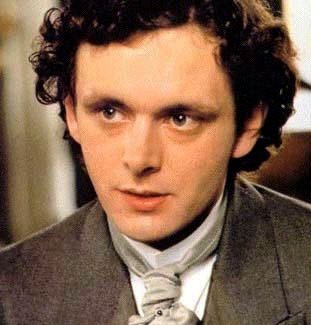
That's David in 1995 in The Bill and Michael in 1997 (not quite 99 like it's supposed to be) in Wilde.
Those are children! Mere babies!
#obviously their age gap doesn't quite match cause michael and david are only 2 years apart but still#also damn michael sheen cause i wanted to find a movie or tv show but in 1999 he only did voice acting lol#so 1997 was the closest#plus he played robbie ross (my beloved) which is close to aziraphale in some ways dfhfdg#and david was a criminal in the bill (i think) which goes with the demonic nature of crowley lol#ANYWAYS enjoy my silly post#angel talks#good omens#david tennant#michael sheen
7K notes
·
View notes
Text
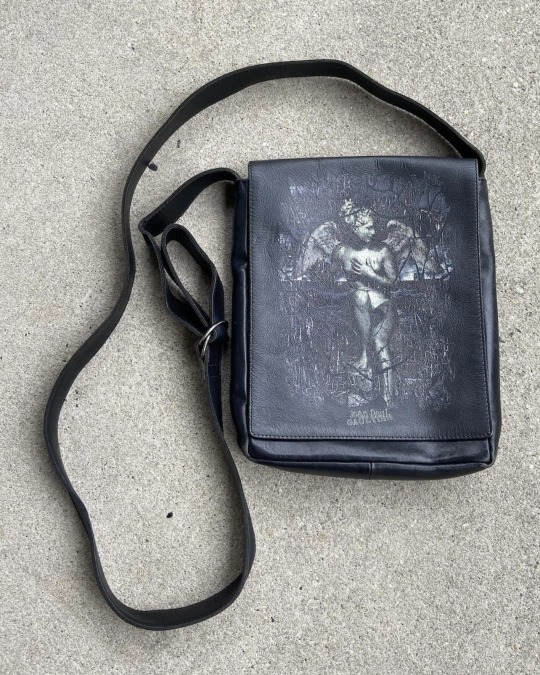
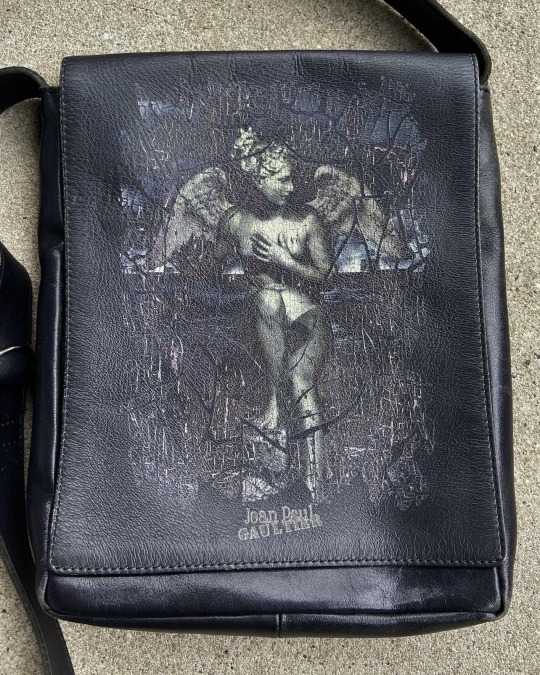
Jean Paul Gaultier: leather angel bag (1999)
7K notes
·
View notes
Text

yaoi so crazy one of them ain’t real
#fight club#tyler durden#the narrator fight club#fight club fanart#fight club 1999#soapshipping#im a big fan of tyler being an angel/devil#on his shoulder
425 notes
·
View notes
Text
The Goo Goo Dolls - Iris
#The Goo Goo Dolls#Dizzy Up The Girl#Iris#Format:#CD#Album#Country:#Europe#Released:#1999#Genre:#Rock#Pop#Style:#Pop Rock#Alternative Rock#Alternative Rock (Modern Rock) band from Buffalo#New York#Pennsylvania (USA).#USA#I remember this song playing in City of Angels#although it's not my style of music or movie#I liked the movie!
608 notes
·
View notes
Text

Love&Destroy Playstation 1999
#gaming#retro gaming#video games#low poly#ps1#psone#psx#playstation#screenshots#mecha#mech#love&destroy#love and destroy#aesthetic#ps1 aesthetic#low poly aesthetic#retro games#inti creates#inticreates#90s#1990s#1999#biblically accurate angel#monster#obscure games#edits#obscure#virtual photography
314 notes
·
View notes
Text
A demon and a handsome vampire are talking about how to start a conversation.
Vampire: "Why would a woman I've never met even talk to me?" Demon: "Have you looked in the mirror lately?" V: "..." D: "Guess no."
Angel (1999), s1 e1
(I've started to rewatch Buffy the Vampire Slayer, and I have just got to the Angel series - and I'm enjoying them immensely.)
8 notes
·
View notes
Text
Narrator: so I was at fight club--
Angel Face: fightpilled clubmaxxer
Narrator:
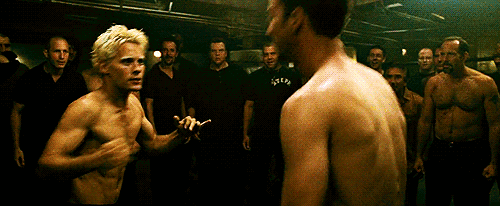
#fight club#fight club narrator#fight club 1999#angel face fight club#angel face#narrator fight club#soapshipping#pilled maxxer
671 notes
·
View notes
Text
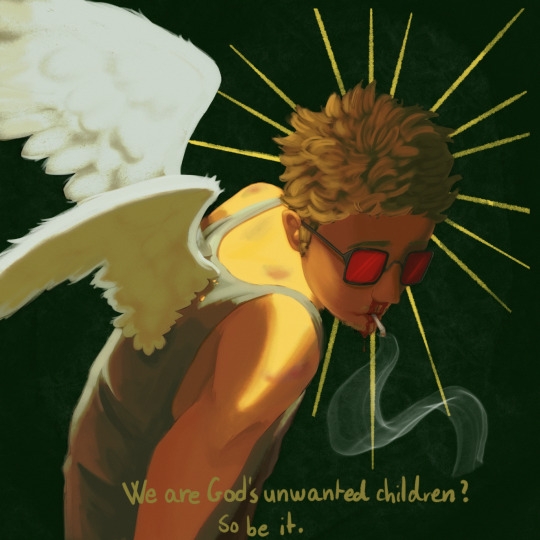
we are god’s unwanted children? so be it.
found this ref in my pictures like a month ago and i hadddd to draw snookums tyler like that. I tried making it look like tyler but shit is so hard man.., ill get better prolly !!
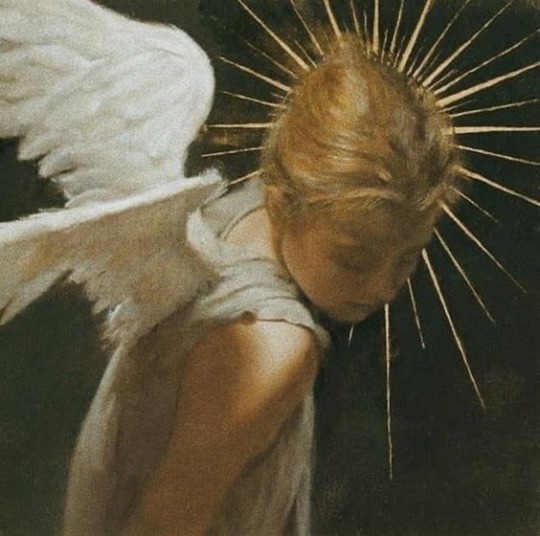
#tyler durden#fight club fanart#soapshipping#the narrator#narrator fight club#fight club 1999#fight club#fanart#tyler durden fanart#religious imagery#religious symbolism#angel#im going crazy#digital art#procreate#digital illustration#digital drawing#digital painting#artists on tumblr#my art
692 notes
·
View notes
Photo

Jennifer Lopez photographed by Tony Duran for Notorious Magazine, 1999
#Jennifer lopez#jlo#j-lo#tony duran#1999#notorious magazine#magazine#photography#beautiful#stunning#angel#angel wings#wings#woman#gorgeous#icon#iconic#singer#90s#1990s#1990s music#90s music#nostalgia#nostalgic#throwback#tbt#tb#90s nostalgia#1990s nostalgia#90s fashion
1K notes
·
View notes
Text


oh. i see how it is. theyre collabing with karaoke places now (PLEASE COLLAB WITH MANEKINEKO KARAOKE ME AND MY BESTIES ALWAYS KARAOKE THERE IT'D BE SO COOL TO SEE RE99 CHARACTERS)
#anyways they look dapper#i want regulus' outfit#the internet angel speaks ♡#reverse: 1999#reverse 1999#re1999#re99#r1999#r99
150 notes
·
View notes